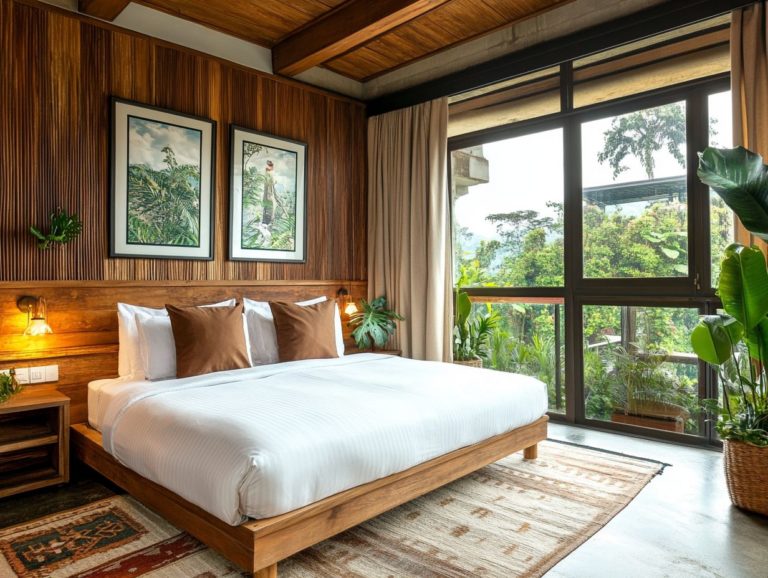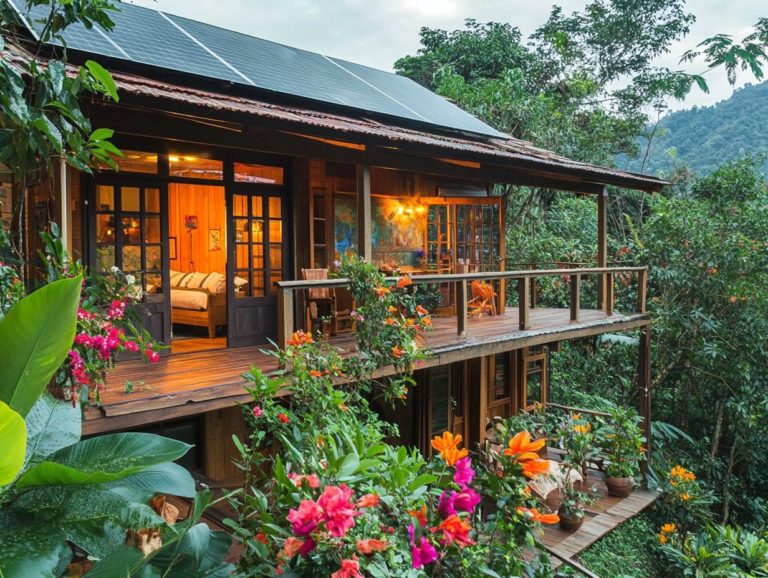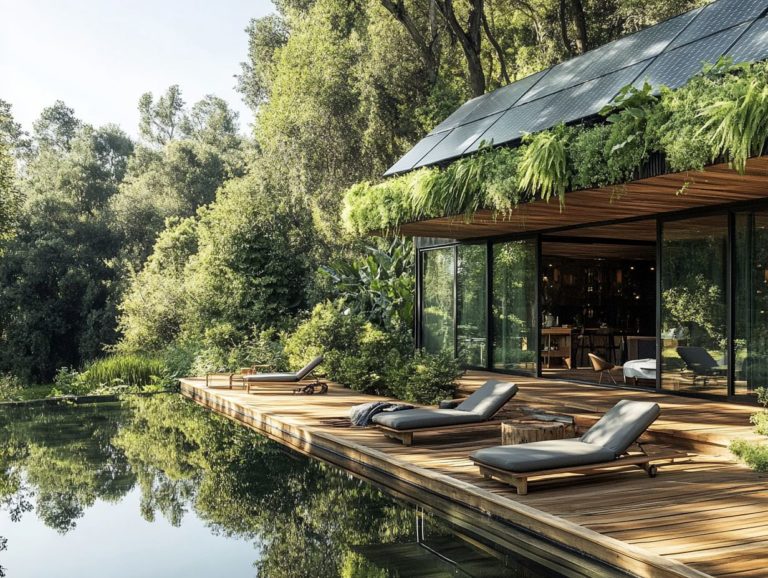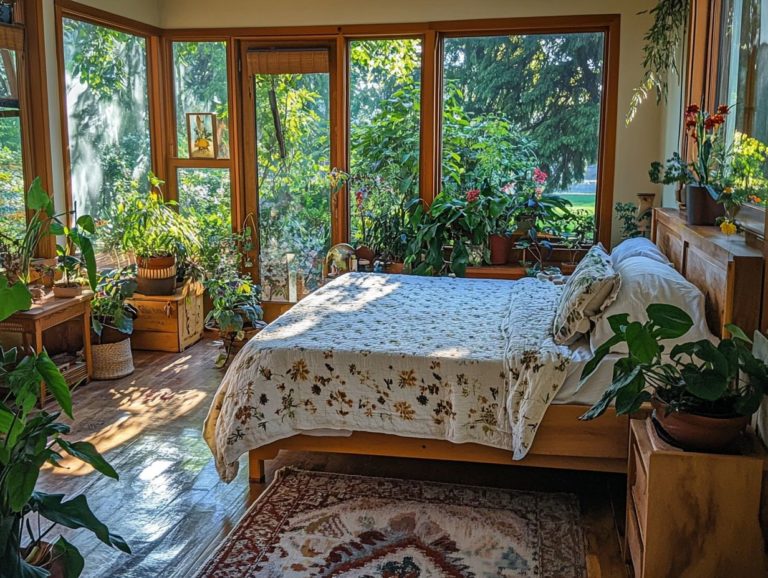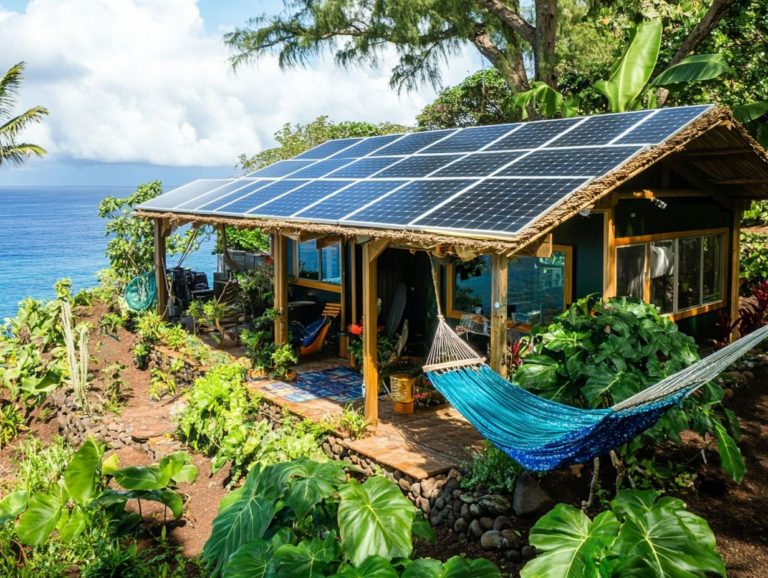5 Benefits of Eco-Friendly Accommodations
Plants, much like you, possess unique methods of adapting to their surroundings, especially regarding light. Understanding how plants adapt to light is essential for their growth and overall vitality.
Get ready to explore the fascinating world of plant light adaptation! This article will help you uncover the various factors influencing how plants respond to light intensity and duration, along with the effects of species and genetics.
You ll discover the signs of successful adaptation, practical strategies to promote it, and the common challenges you may encounter. Act now and empower your plants to thrive in any lighting condition, whether they require indirect light, medium light, or direct sunlight!
Contents
Key Takeaways:

- Plant light adaptation refers to the ability of plants to adjust to different light conditions to survive and thrive.
- The key factors affecting plant light adaptation include light intensity and duration, alongside the specific genetics of the plant species.
- Successful adaptation can be seen through physical changes in plants, positively impacting growth and development. To promote it, key strategies and techniques must be implemented.
What is Plant Light Adaptation?
Plant light adaptation refers to the remarkable ability of various plant species to adjust to their unique light environments. This enables them to optimize photosynthesis, the process by which plants use sunlight to make food, and flourish in a variety of indoor gardening settings.
Such adaptation is crucial for plants like the Fiddle Leaf Fig and Monstera Deliciosa, each with distinct light intensity needs for robust growth. By understanding these specific light requirements, you can make informed choices, whether you re a novice or a seasoned gardener, allowing you to select the ideal plant types for your indoor oasis.
Factors Affecting Plant Light Adaptation
Several factors are crucial in determining how effectively a plant can adapt to its light environment. These include light intensity, duration, and the specific characteristics of the species in question.
Understanding these elements is vital for ensuring optimal plant growth and health, particularly in indoor gardening where natural light may be scarce.
Light Intensity and Duration
Light intensity and duration are key factors in understanding how plants adapt to their light environment. These elements directly influence photosynthesis and overall growth.
By measuring light intensity in foot-candles or lux, you can determine the ideal conditions for your specific plants, ensuring they receive the bright, indirect light necessary for healthy development.
For example, when cultivating succulents like Echinocactus grusonii or Cylindropuntia munzii, recognizing the subtleties of both light intensity and duration can significantly boost their vitality. Using a light meter will help you gauge these conditions accurately, enabling you to make adjustments as needed.
To optimize their growth, position these cacti near south-facing windows where they can enjoy 6-8 hours of sunlight each day. Regularly rotating your plants is also a smart move; it ensures all sides receive adequate light, preventing uneven growth and promoting a lush, healthy appearance.
Ready to give your plants the light they need? Start today!
Plant Species and Genetics

The genetics of various plant species play an important part in how they adapt to different light environments. This shapes their specific light requirements for optimal growth. For instance, the Snake Plant flourishes even in low light. On the other hand, the Fiddle Leaf Fig seeks out bright, indirect light. This diversity in light adaptations among indoor plants is truly fascinating.
These genetic variations don t just influence leaf structure and color; they also affect photosynthesis and respiration processes based on the available light. Take the Birds of Paradise, for example. Its vibrant foliage and distinctive form have evolved to efficiently capture sunlight in its native tropical habitat, thriving best in abundant indirect light.
Meanwhile, the Dracaena Lisa has cleverly adapted to lower light levels, making it an excellent choice for indoor settings with limited sunlight. Understanding these genetic factors and their impact on light preferences allows you to choose the most suitable species for your unique environment. This leads to healthier, more vibrant plants that truly thrive.
Signs of Successful Adaptation
Successful adaptation in your houseplants manifests through distinct physical changes and enhancements in growth and development. This signals that they are flourishing in their light environment. This is especially evident in indoor gardening, where particular signs serve as valuable indicators for assessing plant health and light conditions effectively.
How Plants Change to Adapt to Light
Physical changes in plants, such as leaf size, color, and growth patterns, serve as vital indicators of successful light adaptations and overall plant health. For instance, an increase in chlorophyll production typically signals that the plant is receiving adequate light. This is essential for how plants make their food using sunlight.
When light conditions are just right, you ll notice certain plants undergoing striking changes in their foliage. For example, the Fishtail Palm boasts broader, vibrant leaves that enhance its ability to capture sunlight. This allows it to harness energy more effectively.
Similarly, the Snake Plant showcases its adaptability by producing thicker leaves that not only retain moisture but also maximize photosynthetic efficiency, even when light levels fluctuate. These adaptations help plants grow better and handle stress more easily!
Such physical transformations highlight the critical role of light in the health of plants. They showcase the remarkable ability of plants to thrive in a variety of conditions.
Impact on Growth and Development
The impact of light conditions on the growth and development of houseplants is crucial. Adequate light is essential for photosynthesis and overall vitality. When light conditions are poor, plant growth can suffer. However, when you set up optimal lighting, you can accelerate development and enhance the beauty of your indoor plants.
Understanding the specific light requirements for different species is key to cultivating thriving greenery in your home. For example, succulents and cacti crave bright, direct sunlight, flourishing best on windowsills where they can soak up those glorious rays. Conversely, shade-tolerant varieties like Snake Plants and Pothos prefer the gentler embrace of indirect light, making them perfect for dimmer corners.
To achieve the ideal balance, consider using sheer curtains to diffuse harsh sunlight for your more sensitive plants. Meanwhile, grow lights can work wonders by simulating natural light for those that need a little extra boost. By tailoring light conditions to each plant’s needs, you can create a vibrant indoor garden that truly flourishes.
How to Promote Plant Light Adaptation
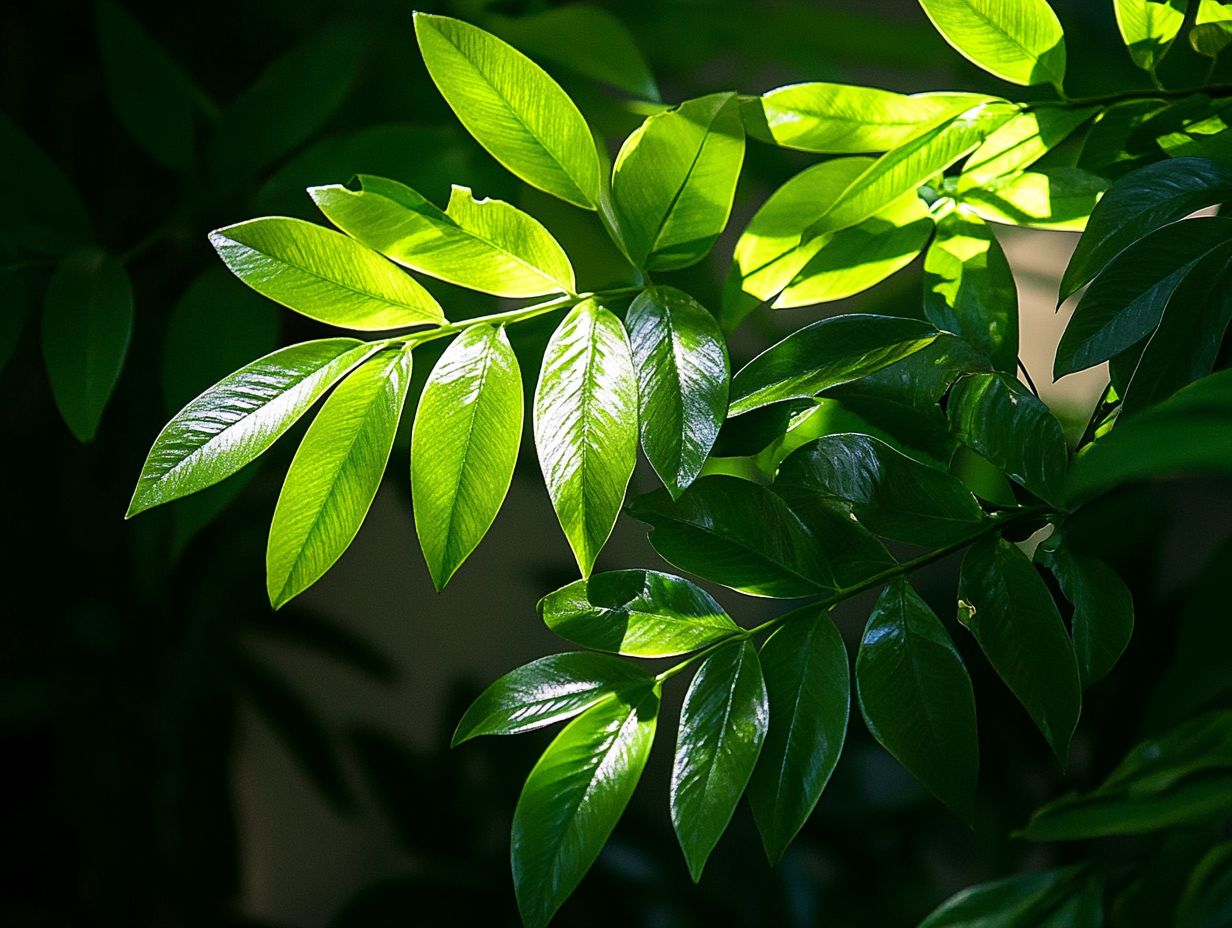
Promoting plant light adaptation requires you to implement essential strategies and techniques tailored to the unique light needs of different species. This ensures their growth and vitality in indoor gardening environments.
- Adjust window directions to maximize natural light.
- Optimize light collections for better exposure.
- Incorporate artificial light where necessary.
By following these strategies, you can significantly enhance light exposure for your plants. Start optimizing your plant s light exposure today for a thriving indoor garden!
Key Strategies and Techniques
To promote plant light adaptation effectively, implement key strategies tailored to the specific light conditions in your home. This involves selecting suitable plant types based on their individual light requirements and optimizing their placement.
By understanding the diverse needs of each plant species, you can create an environment where every green companion thrives. Consider factors such as the intensity and duration of natural light in your home. Sun-loving species will flourish near windows, while shade-tolerant varieties will be happier in cozy, dim corners.
Regularly adjusting artificial lighting, including grow lights when necessary, will cater to the needs of plants that require higher light exposure. Keep an eye on growth patterns and leaf coloration to fine-tune these conditions, leading to a lush, flourishing indoor garden.
Potential Challenges and Solutions
Understanding the potential challenges of plant light adaptation is crucial for indoor gardeners. These common obstacles can significantly impede plant health and overall growth of your houseplant collection.
By recognizing these challenges, you can implement effective solutions, ensuring optimal conditions for your diverse houseplant collection.
Common Roadblocks and How to Overcome Them
Common roadblocks like inadequate light intensity, poor placement, and a lack of familiarity with plant types, such as the Braided Money Tree or the Birds of Paradise, can pose significant challenges to your indoor gardening endeavors. However, there are strategies to overcome these hurdles.
Recognizing that different plants thrive under varying light conditions is essential. Some bask in bright, direct sunlight, while others prefer the gentler embrace of low light. By strategically positioning your plants near windows or utilizing reflective surfaces, you can boost their growth.
Incorporating artificial light sources, such as LED grow lights, can transform your indoor garden, especially during darker months. These special lights help plants grow better indoors by emitting essential wavelengths that promote photosynthesis, nourishing healthier and more vibrant plants.
Regularly rotating your indoor plants ensures they receive even exposure to light. This helps prevent uneven growth and fosters a balanced, flourishing indoor garden.
Frequently Asked Questions

What is plant light adaptation?
Plant light adaptation is the process by which plants adjust to changes in light conditions to optimize their growth and survival. This includes how different species, such as Snake Plant and Fiddle Leaf Fig, adapt to light.
Why do plants need to adapt to light?
Plants need to adapt to light to regulate their photosynthesis and energy production, which are essential for their growth and survival.
How do plants adapt to different light conditions?
Plants use several clever tricks to adapt to different light conditions. They can change the direction of their leaves, adjust their chloroplasts, and produce pigments to absorb various light wavelengths.
Chlorophyll is the superstar of plant adaptation, helping them thrive in varying light conditions!
What are the types of plant light adaptation?
There are two main types of light adaptation in plants: phototropism and photosynthesis. Phototropism allows plants to grow towards or away from light, while photosynthesis is how they turn light energy into food.
How does light intensity affect plant light adaptation?
Light intensity is crucial for plant adaptation. It determines how much energy is available for photosynthesis and influences overall plant growth and development.
What are the environmental factors that can impact plant light adaptation?
Other than light intensity, several environmental factors affect plant adaptation. These include light exposure duration, light quality, and stressors like drought, temperature, and pollution.
Humidity also plays a key role in how plants adapt to their light conditions.

